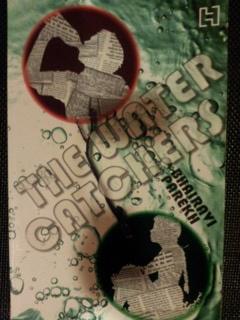

Chintan or Chintu or Chintya is an unassuming and a mild boy, who gets
bullied easily at school and starts stammering when he is nervous.
Chintan is also an affectionate grandchild and an obedient son – he
does not give his school or family much of a chance to complain about
him.
This ordinary boy manages to surmount the seemingly ordinary
struggle of Mumbai’s insufficiencies as his day begins with the
challenge of surviving the water scarcity in this maximum city. At
school he has to put up with the school bully – Bagadia and his Sholay
Gang. It is his resistance to face the gang which takes him to a lead
role in the school water conservation project and in the process
achieves respect of his peers. Then comes the prophecy, as told to his
grandfather years ago, “Someone from your bloodline will benefit your
village. This benefit will be connected with water in some way...”.
The village is Tintodan in Gujarat. At Tintodan, Chintan meets his
cousin Maahi – a water diviner and from there changes the course of
destiny of the village and everyone associated with it.
This simple and easy flowing book soaks the readers as it flows and
ebbs from the fast ways of an urban setup to the unhurried pace of the
rural scene. It keeps the reader thirsty enough to turn the next page
and the next and the next...till you reach the confluence of Chintan’s
life and the prophecy.
The illustrations are simple sketches in black
and white but capture a perfect measure of the mood in every chapter.
The book dwells greatly upon the inevitability of prophesies that
compels Chintan to search for the saviour of his ancestral village.
Here, perhaps the book could have accentuated on Chintan’s own
courage, drive and ingenuity to help the villagers. However, the book
is open to multiple interpretations from being a simple conclusion of
finding the redeemer to the deeper lessons of finding inner strength
and courage against all adversities.
The book is a great reservoir of information on water projects and the
heroes working actively in the pursuit of water conservation in India.
It introduces the children in a non-threatening way to the perils of
non-conservation and the frightening reality of water scarcity.
Therein lies its winning splash.